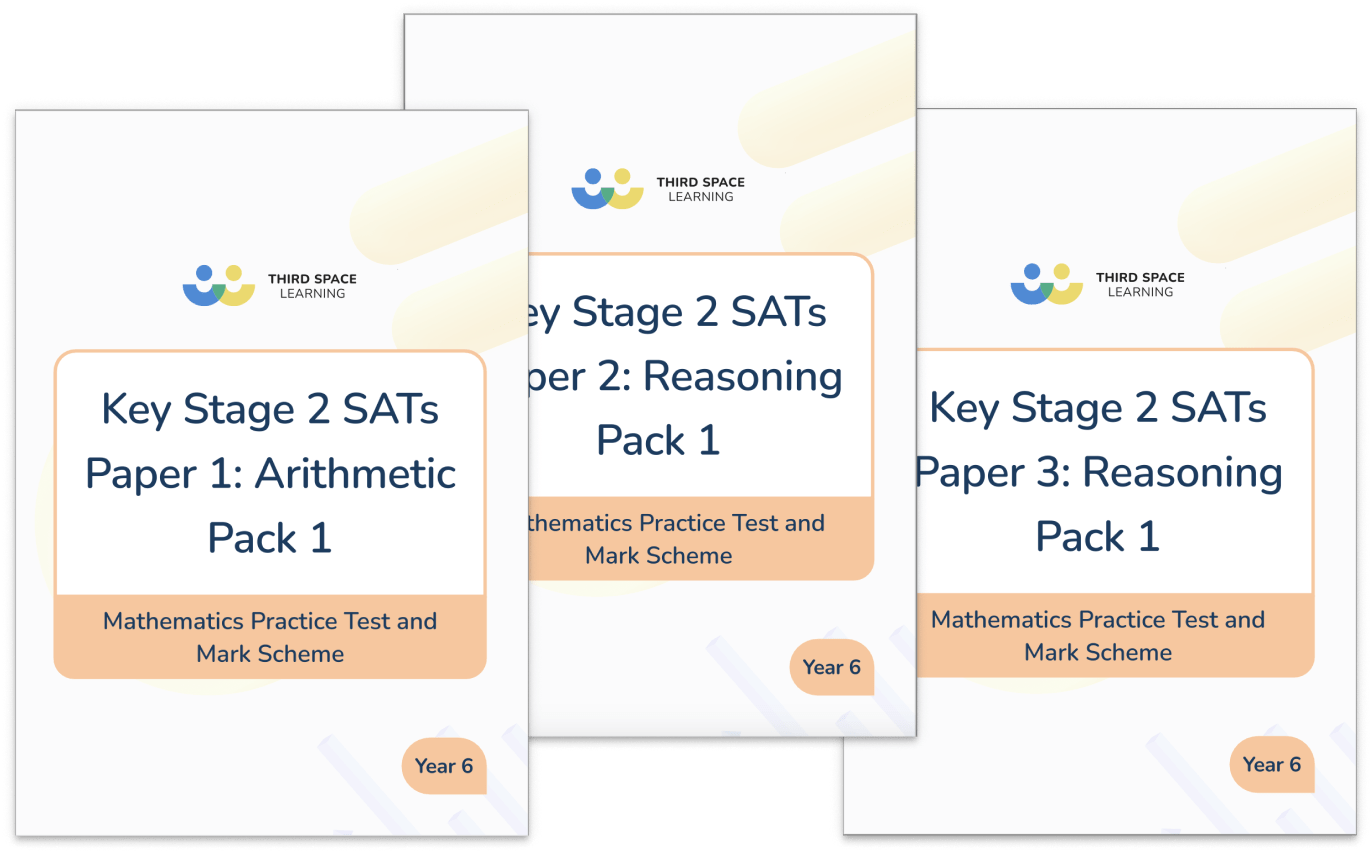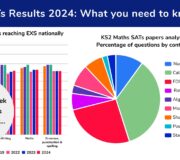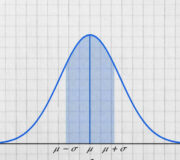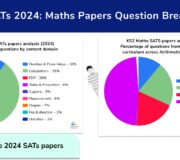KS2 SATs Preparation: How to Help Year 6 Children Revise Maths at Home
SATs preparation can be a very nerve-wracking prospect – for teachers and parents, as well as pupils. Fortunately, we’ve worked with over 40,000 UK primary school children, delivering over 560,000 maths lessons online.
We’ve analysed the progress of over 8,000 10-year-olds, so we know exactly what’s needed when it comes to getting it right in the SATs exams. From what to expect, to KS2 SATs 2023 preparation tips, to SATs style questions to practice together – we’ll get you on track for acing those exams!
What are the Year 6 SATs?
Before you think about exactly how to help your child with SATs though, it’s crucial to understand a little more about what they are, how they work and why 10 and 11-year-olds have to sit them in the first place.
SAT stands for Statutory Assessment Test.
- The exams test what children have learned in primary school.
- There are tests for reading, maths, grammar, punctuation and spelling.
- The SATs take place in May, usually across a one week period (some schools call this ‘SATs week’)
At the end of Year 6, class teachers will use the results of the SATs and the work children completed over the year to say whether they met the expected standard recommended by the National Curriculum.
What do the scores mean?
It takes a couple of months for external markers to review all the tests. When they are marked, you get a ‘raw score’ (how many marks you got out of the total), but it will be translated into a ‘scaled score’ that shows how you did compared to the national average. Above 100 on the scaled score is above expectation, below 100 means they are working towards the expected standard. Parents and teachers will be sent both the raw and scaled scores, but the old system (with levels like 3a and 4b) isn’t used any more.
FREE KS2 Maths SATs Practice Papers
Get ready for SATs with this set of 6 maths SATs practice papers. Papers designed to help your Year 6 improve test skills and confidence.
Download Free Now!What are the KS2 maths SATS tests like?
There are three maths papers: one for arithmetic and two for mathematical reasoning. The questions – for the most part – are ordered by how difficult they are, starting with the easiest.
Paper 1: Arithmetic
This paper tests how well children can work out calculations with no context. You’ll only see a calculation and an answer box for each question, as well as a small area to show your workings. This test is quite short – only 30 minutes. That’s why it’s important to practise mental maths all year round.

Papers 2 and 3: Reasoning and problem solving
Paper 2 and Paper 3 contain word problems, use of measurements (including pounds and pence, kilograms and metres), geometry and statistics. It’s important to show your working out (or jottings) in this paper, as you can still get marks for an appropriate strategy when the answer is wrong.
You can use a ruler, protractor and a mirror in this exam (but no calculator) and you get 40 minutes to complete Paper 2 and 40 minutes to complete Paper 3.


How can parents help children with SATs preparation at home?
If you’re a teacher, you may be asked by parents how they can support their children at home. Sharing the important basic information about the exams is a good place to start.
If you’re a parent, thinking about how to help your child with SATs practice may seem like an impossible feat, but read on and you’ll soon see this just isn’t the case!
Now parents know what the exams look like, it’s time to start practising.
But, what parents should focus on changes depending on how much time they have to spend on home learning.
- If starting early, revise the more complex ideas in Key Stage 2.
- If short on time, do not fret, just make sure the foundations are solid to make the more challenging concepts faster to learn.
Either way, we’re confident this blog contains what parents and children need to truly tackle those SATs exams to the best of your ability.
What are the basic skills children need to know for the Year 6 SATs?
There are some skills that prove invaluable for the Year 6 SATs, but they often get neglected – such as times tables and finding fractions or percentages of amounts.
Make sure you have these strategies down and the questions will be much easier to understand.
What should children know for Paper 1 (arithmetic) in the Year 6 SATs?
It’s important to nail the four basic operations for Paper 1.
You only get 30 minutes to complete this test, so the more confident your child is with mental strategies, the better.
As the questions in this paper are just numbers and grids, you don’t have to struggle with vocabulary so much.
Key Stage 2 SATs preparation tip #1: Refresh the formal written methods too – some questions award extra marks for showing your working out.
Note: The methods outlined in this blog in relation to multiplication, division, addition and subtraction are just some of the methods you can use to support your child during their revision of these topics. They may have been taught different methods at school, so it is always important to check your school’s calculation policy to see which method they use!
Multiplication
Year 6 children need to know how to multiply three- or four- digit numbers by two-digit numbers for the SATs exams. Mastering your times tables inside out makes solving these questions happen much quicker.
Key Stage 2 SATs preparation tip #2: Neat presentation can save you from making costly mistakes too so try to make sure your child writes one number per square on the grid paper.
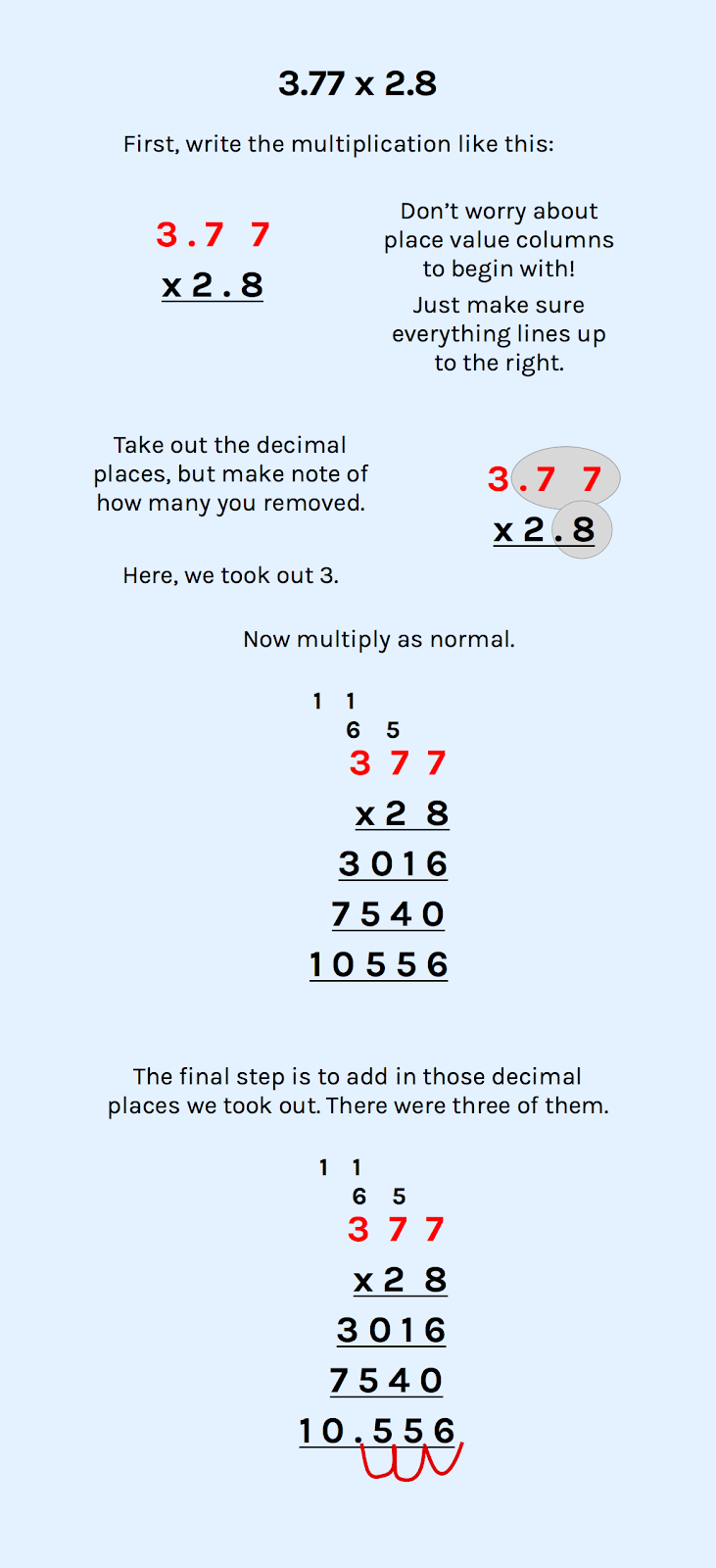
To solve a multiplication problem that involves decimals, you need to use a different strategy.
Note: Place value is the value of each digit in a number. It means recognising that digits in different columns have different values. E.g. A one in the ones column is only worth one, but a one in the hundreds column is worth a hundreds ones.
Question time!
Use written multiplication to solve this SATs question from Paper 1.
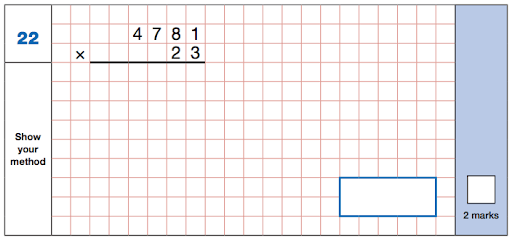
Division
One of the trickiest primary maths strategies to master is long division. But it’s not as scary as it sounds. There are a lot of steps involved, so it’s easy to forget them.
Key Stage 2 SATs preparation tip #2: Make up fun ways to remember each part of the process to make it easier.


If your child gets stuck at any point, it’s okay to go back over it with them. Doing this should result in them eventually getting the answer, and will be a chance to really cement those division skills.


Question time!
Have a go at applying long division to this SATs question from Paper 1.
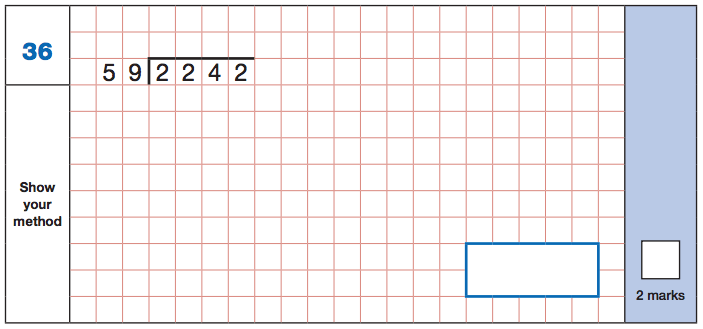
Addition
By Year 6, children should be able to add larger numbers using the formal written method.
Key Stage 2 SATs preparation tip #3: Practise adding numbers with 4 or more digits.
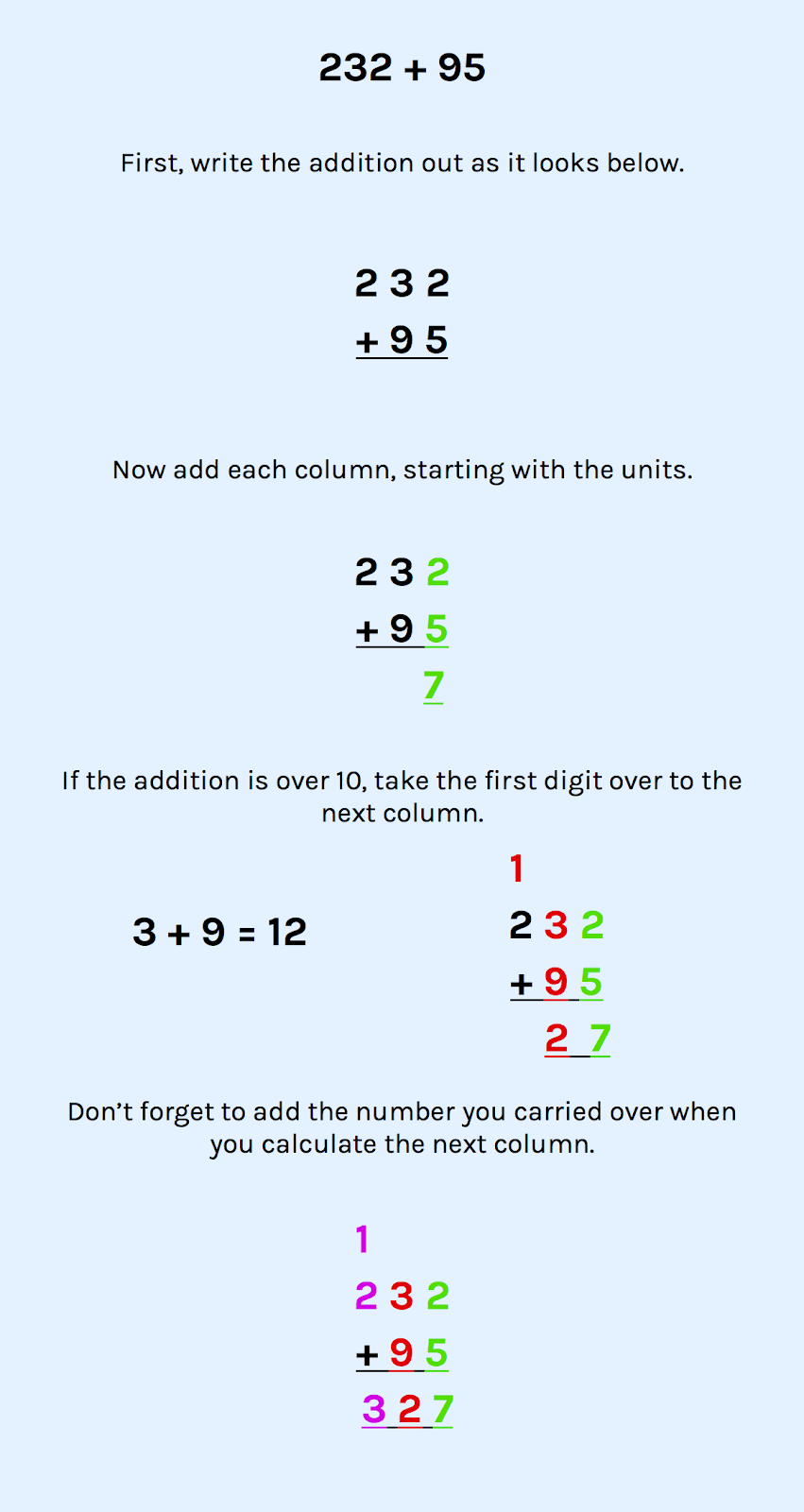
Question time!
Addition questions are usually worth fewer marks because the work required is simpler than division or multiplication. But it is still advisable to use the formal written method in the grid space to make sure your answer is correct.
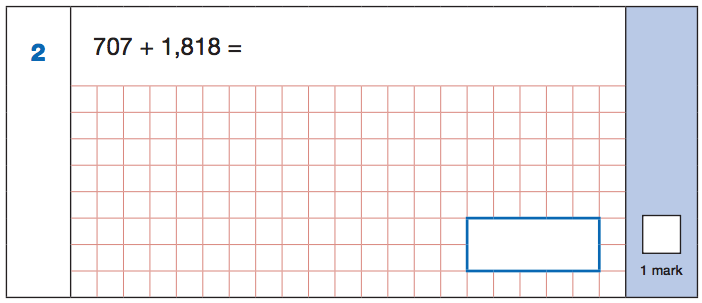
Subtraction
Make sure you practise subtracting larger numbers. Now is the time to consolidate carrying numbers over, too.
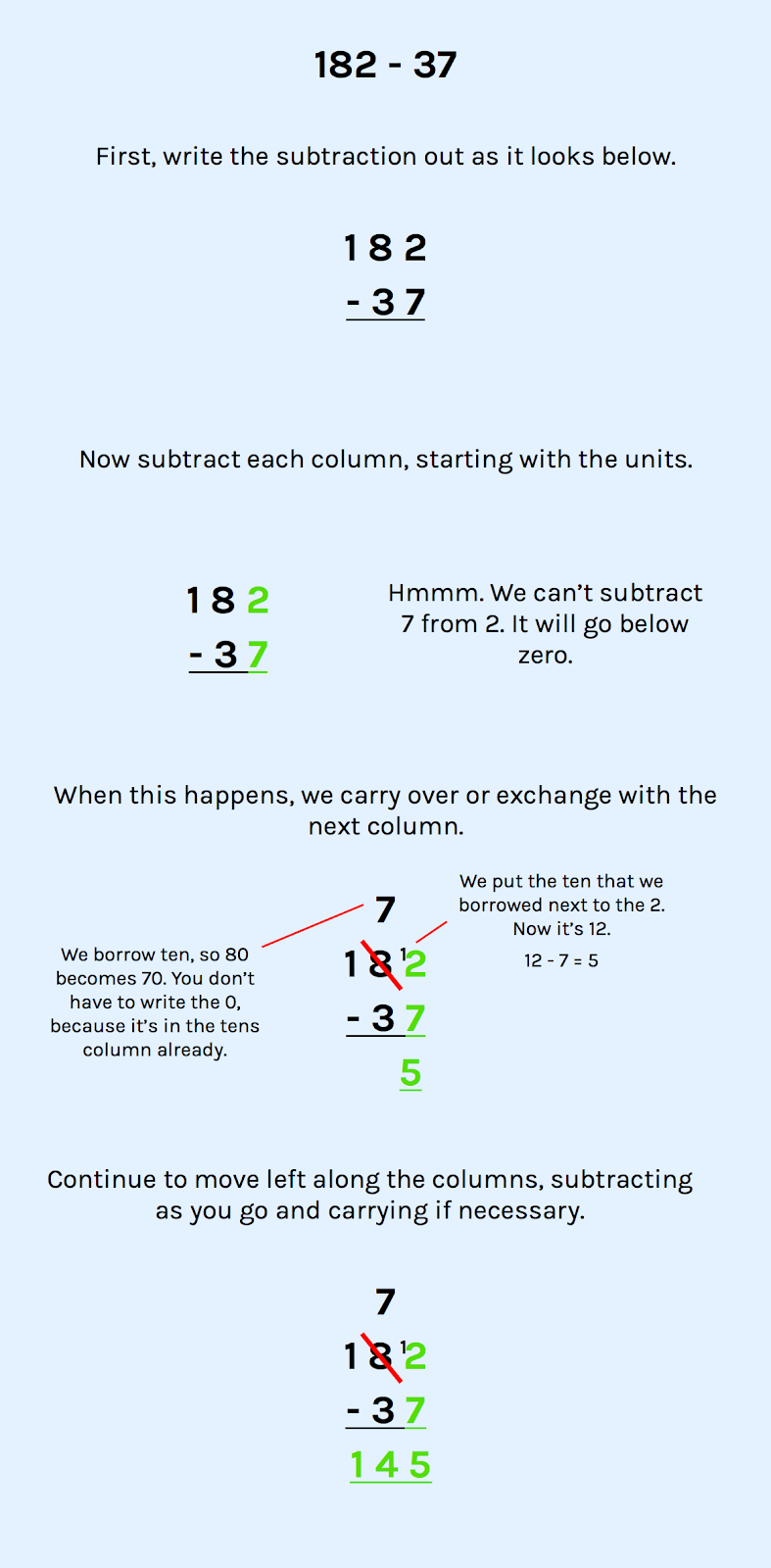
Question time!
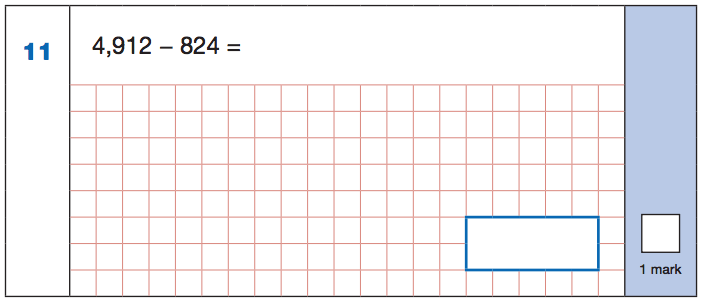
Times tables up to 12
You’ve probably heard it a million times.
Practise the times tables up to 12 x 12!
But knowing your times tables and corresponding division facts really makes a difference in speed. Having fast recall could be the difference between finishing an exam paper and having to miss questions.
Fun ways to practise times tables at home
There are so many activities out there to learn times tables in an engaging way. Times tables hopscotch is one we love here at Third Space Learning – it’s perfect for revision and getting you out of the house, so take a look at the video below!
What should children know for Paper 2 and 3 (reasoning and problem solving) in the Year 6 SATs?
Paper 2 and Paper 3 are a bit longer than Paper 1.
Your child will have 40 minutes to complete each one, and the questions will increase in difficulty as they progress through each paper.
Many children find Paper 2 much more difficult than Paper 1. It requires more understanding of mathematical vocabulary and knowledge of number facts (like negative, square and prime numbers) and other concepts (such as internal angles, formulas to calculate areas and substituting numbers for letters or other symbols for algebra). Problem solving and reasoning can be challenging, but there are ways to make this test easier.
A SATs Preparation Priority: Learn key vocabulary for the Year 6 SATs
If you can’t understand the question, it’s almost impossible to answer it. Many children struggle with Paper 2 because they don’t know what the words in the question are asking them to do.
Why not have a go at playing hangman with a few of these words every day to keep them fresh?
On top of this, a top tip is to get your child to write out some of the words they’re least familiar with on some post-it notes and stick them up around them house and you can test them on it each time they go past! This will to help embed the tricky vocabulary in their minds (although it does mean the decor might be a bit bright for a few months!)
Multiplication vocabulary for the Year 6 SATs
Look out for these phrases in word problems.
Tip: You might need to use multiplication to solve them!
- Double
- Lots of
- Groups of
- Times
- Multiply
- Multiplication
- Multiplied by
- Multiple of
- Product
- Once, twice, three times… ten times… times as (big, wide, etc.)
Repeated addition: Showing that multiplication as adding a number more than once (like 2 x 3 = 2 + 2 + 2)
Array: A way of showing multiplication in columns and rows (like 2 rows of 3 to show 2 x 3)
Prime number: Any positive whole number bigger than 1 that can only be divided by 1 or itself
Composite number: Any positive whole number that isn’t a prime number
Square number: A number multiplied by itself, like 2 x 2
Cubed number: A number multiplied by itself and then multiplied by itself again, like 2 x 2 x 2.
Factor: Any number that you multiply by another number
Common factors: Two or more numbers that can be used to make the same product (answer)
Multiple: Multiples are the many different answers you could get if you multiplied your number by another number
Common multiple: When the same number happens in different times tables, we call it a common multiple
Division vocabulary for the Year 6 SATs
Here are a few commonly-occurring phrases to do with division that might crop up in word problems.
- Halve (this means the same as divided by 2, or ÷ 2)
- Share
- Share equally
- One each, two each, three each…
- Group in pairs, threes… tens
- Equal groups of
- Divide
- Division
- Divided by
- Divided into
Remainder: When the answer to a division isn’t a whole number, you can write what’s left over as a remainder (such as 11 ÷ 5 = 2 remainder 1, or 2 r 1)
Quotient: The answer to any division calculation
Divisor: The number of groups you need to divide a number into
Dividend: The number that you are dividing into groups
Addition vocabulary for the Year 6 SATs
Learn these words to make addition problems easy to understand.
- Add
- Addition
- More
- Plus
- Increase
- Sum
- Total
- Altogether
- Near double
- How many more to make…?
Subtraction vocabulary for the Year 6 SATs
While you might have the formal written method for subtraction down, it’s important to make sure you know how to spot it in a word problem too.
- Subtract
- Subtraction
- Take (away)
- Minus
- Decrease
- Leave
- How many are left/left over?
- Difference
- Between
- How many more/fewer is… than…?
- How much more/less is…?
What else do children need to know for the Year 6 SATs exams?
There are a number of areas to cover in Year 6. It might seem like a daunting task to cover them all, but your child will have learned these over the course of primary school, so it won’t be completely new.
- Data handling
- Geometry
- Shape
- Space and measurement
- Problem-solving in context
There are easy ways to practise these skills without revising 24/7.
How to help your child with SATs skills at home: Practise, Practise, Practise
These activities cover the skills that are required for Paper 2 and 3. It’s best to make this kind of practice as real and fun as possible – that way, you keep exam fatigue at bay!
Reading timetables
If you’re getting the bus or train anywhere, ask your child to check the timetable for you.
How long will it take you to get from the start of the journey to the finish?
When is the first and last service?
How long will it take to get home?
Make this a habit, and questions like the one below will be a doddle.
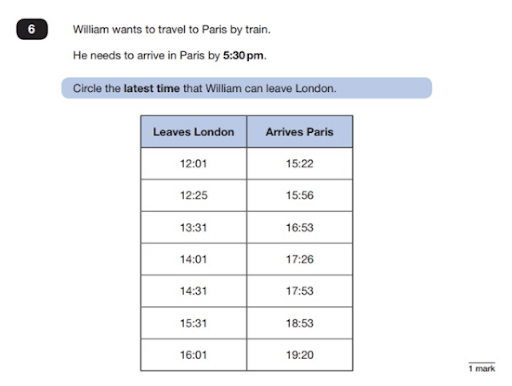
Unfolding nets of 3D shapes
Time to get crafty! When it comes to revising unfolding nets of 3D shapes, there are lots of fun and simple activities out there!
Step 1: Print out the nets for 3D shapes – take a look at how to make them below!
Step 2: Ask your child to cut them out and practise building each shape.
Step 3: Repeat!
The more familiar your child is with what each net looks like, the better. All-in-all, such an activity will develop the spatial awareness that your child needs for questions like this one.
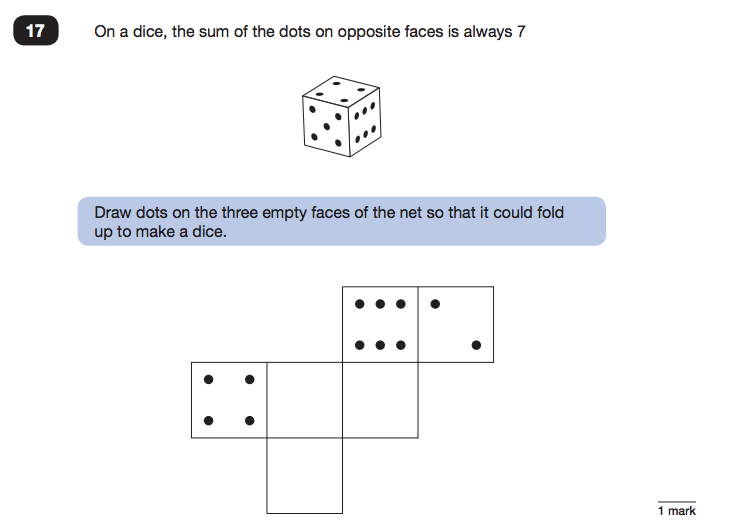
Fractions, decimals and percentages
It’s important to know the equivalent decimals and percentages to some common fractions in Year 6, so make sure your child gets these locked down as they’re sure to come up in the exams.
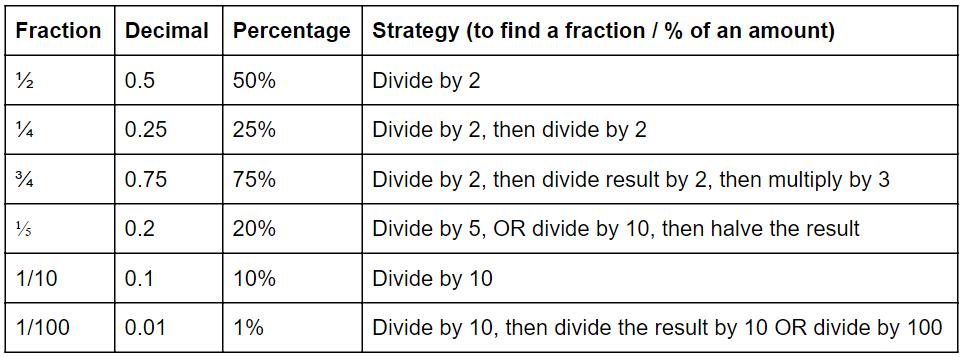
Here’s an example of the type of question where you need to use these facts:
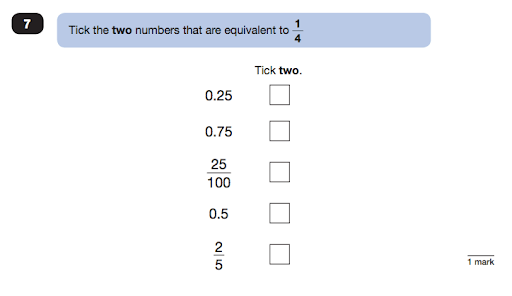
Later on in Paper 2 and 3, you may also encounter questions that mean you have to work out the equivalent fraction, decimal or percentage.
Handling money
Money is a common theme in SATs questions. You could be adding, subtracting, multiplying, dividing – or a mixture of two or more operations in a word problem.
When thinking about how to help your child with SATs, it’s a great idea to practise using real-life methods so children understand how maths is applied in context.
Here’s a simple real-life maths activity you can do with your child to ensure they’re on track to do well on their SATs papers.
Shopping Sums
- Get your child to help you with the weekly food shop.
- Before you go, ask them to write the shopping list out, estimating roughly what each item will cost.
- Add up the estimated to find a rough total (mentally if possible).
- Once you’ve done your shopping, work out the difference between the estimate and the real amount using formal written methods of addition, subtraction (and multiplication for multiples of the same item).
Here’s a sample money question from Paper 3.
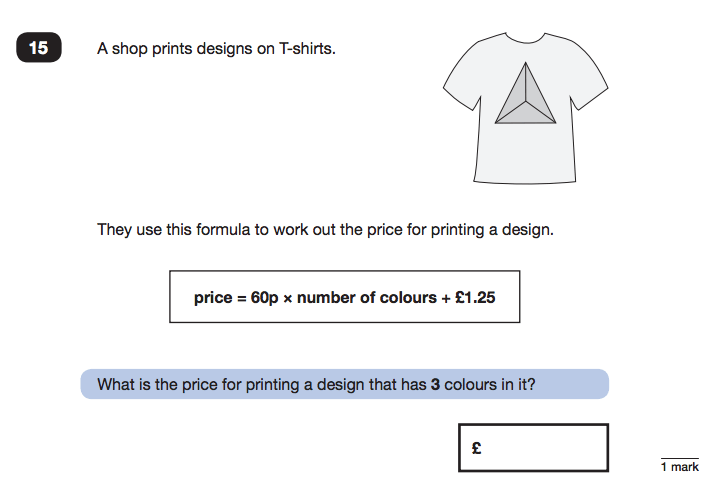
Here, we would start by multiplying 60p by the number of colours – of which there are three. So, 60p x 3 = £1.80. (Notice here why it is important for your child to be able to interchange between pounds and pence fluently.) Next, we add £1.80 to £1.25 which total £3.05.
Working out time intervals
Calculating time differences can be really confusing, so the more practice you get, the better.
A great way to revise this in context is with cooking.
Meal-time Maths
Ask a few well-placed questions to help them understand why time differences are important to know.
Here are some easy example questions you could pose:
If the preparation part takes 20 minutes, and cooking takes 50 minutes, how much time will that be altogether?
If we start at 1pm, what time will we finish by?
You can also make use of other skills while cooking!
Have a go at asking your child to halve or double the ingredients according to your needs, or convert between measurements (like litres to millilitres).
What else can parents do to help children with SATs preparation?
Firstly, if you want even more exciting ideas on how to help your child with SATs then check out our blog on supporting your 11-year-old with maths and our list of home learning resources, or if you’re looking to spice the maths revision up at home, take a look at our blog on how to help your child with maths at home.
Secondly, one of the biggest hurdles for many children when it comes to the exams is reading fluency. The more you read, the easier it is to understand unfamiliar words.
Even in maths, this can give your child a major advantage. Not to mention, reading also has the benefit of being relaxing, so make sure your child has time to kick back and enjoy a book every now and then.
As it gets closer to May and the exams, you may also want to download some practice papers for your child to try. Past papers and other SATs practice materials are available free from the Department of Education, and include test papers from 2017, 2018, 2019 and 2022. Find them here:
Practice tests are a great way to help children get used to the style and level of challenge of the SATs in a less pressured environment.
Finally, it’s important not to overwork in the run up to the SATs, even though it will feel like everyone is rushing to the finish line. Going into the exams with a clear, cool head is much better than trying to cram last minute.
So – get started now and chip away until May.
Little and often is the key!
DO YOU HAVE STUDENTS WHO NEED MORE SUPPORT IN MATHS?
Every week Third Space Learning’s specialist primary maths tutors support thousands of students across hundreds of schools with weekly online 1 to 1 maths lessons designed to plug gaps and boost progress.
Since 2013 these personalised one to one lessons have helped over 169,000 primary and secondary students become more confident, able mathematicians.
Learn about the SATs revision programme or request a personalised quote for your school to speak to us about your school’s needs and how we can help.

